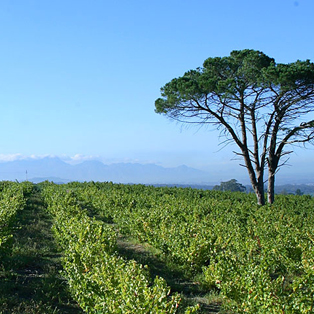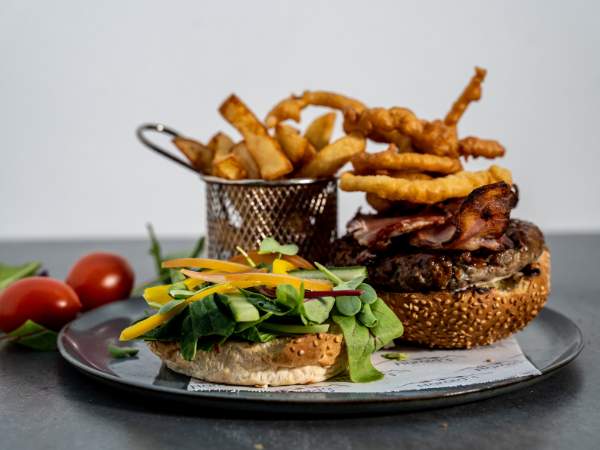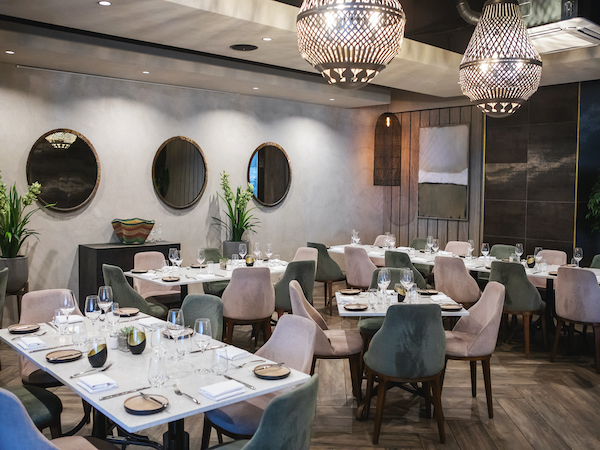News
Grape expectations
Friday, July 8th, 2011
Cornelis Dumas, the man responsible for the much-lauded Jacobsdal Pinotage welcomes me at the gate of his home along with three gambolling dogs. Once the home of artist Marlene Dumas, Jacobsdal is situated between Stellenbosch and Kuils River and on this clear day, the view from the farmhouse is pretty spectacular. On the right lies the unmistakable silhouette of Lion’s Head, Table Mountain and Devil’s Peak, next to it, the icy blue of False Bay, shrouded by Simon’s Town’s mountains, and way to the left you can see the Strand.
Breaking the ice, Cornelis takes me on a tour of the farm’s cellar, which was built by his grandfather in 1920. It’s not the modern, stainless-steel filled type of vault I’ve come to know from previous wine cellar visits, but a rather simple, primitive looking barn-like structure with a pitched roof, built-in ventilation slats and open fermentation tanks crafted out of concrete.
His is an old-fashioned operation, Cornelis tells me. “I suppose I do a lot of things unconventionally,” he smiles. “I don’t irrigate my vineyards, I don’t use yeast, my grapes are pressed by hand and I use only the free-flow to make my wines. Neither my grandfather, nor my father ever used yeast in the fermentation process and they both produced delicious port.” Port? I ask surprised. I thought the farm had always been dedicated to making red wine.
Cornelis goes on to explain that after he took over the farm at the tender age of 21 in 1966, economic sanctions made exporting port near impossible, so he made the decision to focus on producing wine for the local market instead. He replaced the farm’s existing Chenin Blanc and Cinsaut vines with Sauvignon Blanc and Pinotage, and so the legendary red was born.
“I took quite a big gamble, planting pinotage back in the day,” he says. “It wasn’t a very established wine by any means, but I had faith in its future.”
Later, as we’re seated in the dining room cradling glasses of pinotage (for educational purposes), Cornelis explains that, because he lets his wine ferment naturally, the nose isn’t strong at all. “By adding yeasts during the winemaking process, you’re ensured of a stronger nose,” he explains. “I find that these days there are a lot of wines designed to have an overwhelming fruity, woody nose, but that they don’t follow through in taste. They also don’t age well, either.”
“You’ll find that the taste of my pinotage is quite delicate to begin with, but that it doesn’t fall flat,” Cornelis goes on. “There’s a fine graininess that gets you at the back of the throat. There’s also a slight sweet berry flavour that comes through after a while.”
In the spirit of research I take a sip. And then another one. I can happily confirm that what he says is right on the money. I usually hate Pinotage, finding it too woody and overbearing, but this is quaffably light, without being insipid.
After a while, Cornelis produces a yellowed, slightly weathered copy of Decanter Magazine circa 1984, pointing to a review of Jacobsdal Pinotage. “The way this man describes my wine is exactly how I wanted to make it,” he says enthusiastically. “To this day, it still applies.”
I must admit, Tony Lord’s description puts my own to shame.
Most interesting aroma with a soft, peppery character and underlying spine. Initial impression of lightness on the palate, but underlying body and an almost Burgundian silkiness.
“It’s funny that he got it so right, because we never met,” says Cornelis. “But then, I always say that I put so much of myself in my wine that you don’t need to meet me. You need only taste my wine.”
By Annette Klinger








